How To Deal With Constipation When Potty Training
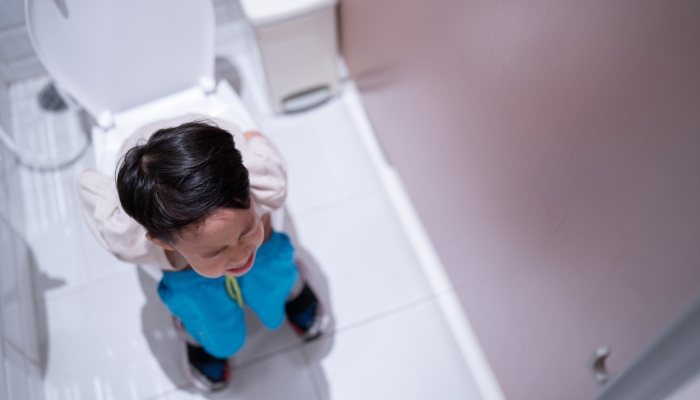
- Some children suffer from constipation during potty training.
- If there’s no underlying medical cause, this is known as functional constipation.
- Poop refusal during potty training can cause constipation.
- Anxiety could be to blame if your kid is holding in their stools.
Some kids take to potty training like ducks to water and are potty trained in days. Others find the transition more of a challenge. Most children have accidents, others may develop a fear of toilets, and some children suffer from potty training constipation.
Potty training constipation is a common condition that often arises from feelings of stress or anxiety around using the potty. This type of constipation is known as functional constipation because there’s no underlying medical cause. Functional constipation is common in children of potty training age.
Not all constipation during potty training will be caused by anxiety, though—it’s possible that your child’s constipation has a medical cause.
Understanding Constipation During Potty Training
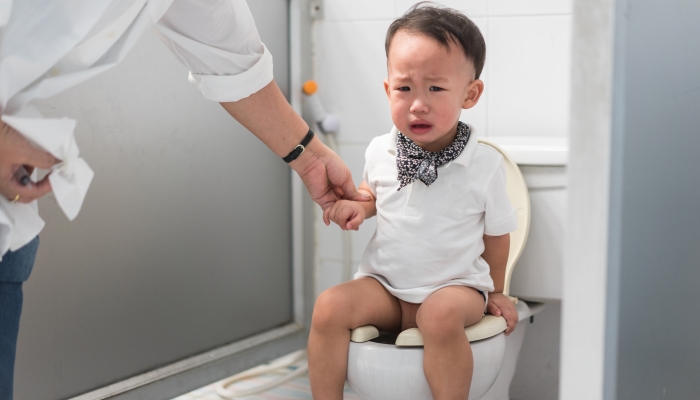
Constipation is not fun. You probably know from personal experience how bad it can make you feel. If your child is suffering from potty training constipation, you’ll want to treat it fast so you can get back to focusing on potty training. It’s important to understand the causes of constipation during toilet training and lifestyle changes that may potentially help.
Causes of Constipation
Most cases of constipation in children are functional constipation, which means there is no underlying medical cause. Changes in diet or lifestyle may trigger constipation. Once a child passes a painful stool, they may withhold future bowel movements, thus unwittingly worsening the problem.
Possible causes of constipation when potty training children include:
- Medication
- Low fiber diet
- Lack of exercise
- Not enough liquids
- Irritable bowel syndrome
- Withholding stools
- Lifestyle changes
Lifestyle changes linked to childhood constipation may include weaning, toilet training, travel, or illness.
So, why does toilet training cause constipation in some children? Unfortunately, potty training can be stressful for some children. They may pick up on parental anxieties and stress, or perhaps feel under pressure to get it right every time.
Children have to learn a lot of new skills when they begin potty training. Firstly, they have to learn to recognize their body’s cues. Then, they have to be able to communicate these cues to a caregiver in good time. Finally, they need to be able to undress in time to get to the potty (not always easy when you’re wearing overalls).
Some children master peeing on the potty easily, but then struggle when it comes to pooping on the potty. This isn’t a problem and it’s not uncommon, so don’t worry if this happens to your child.
Try not to see this as a problem or an indication that anything is wrong. Approaching this issue as a normal part of potty training may help to take the stress out of it for both you and your child.
Signs of Constipation
Constipation is a common condition where a person has hard or infrequent bowel movements. The resulting bowel movement tends to be hard, small, dry, and uncomfortable to pass. Of all the potty training problems, constipation is probably one of the most challenging.
Signs of constipation vary between children, but the following symptoms are possible clues your child may be suffering from constipation:
- Fewer than three bowel movements per week
- Stool leakage (some parents mistake this to be diarrhea in their child’s underwear)
- Difficult or painful bowel movements
- Small, hard stools
- Discomfort and bloating
- Abdominal pain or stomach aches
- Urine accidents
You may also notice some withholding behaviors such as avoiding going to the bathroom, clenching their bottom, and sitting cross legged. Withholding behaviors might appear after a painful stool as your child tries to avoid future poops.
It can be difficult to know if your child is constipated, especially if their vocabulary is limited. It’s important to pay attention to your child’s bathroom habits and behaviors so you can report anything out of the ordinary to your family doctor if needed.
Dietary Strategies to Alleviate Constipation
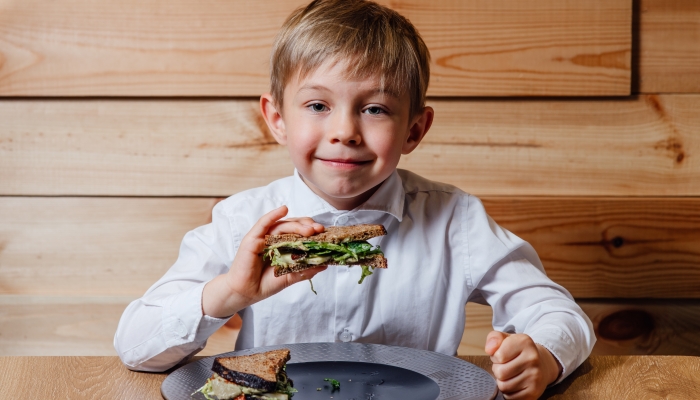
Dietary changes may help to ease your child’s constipation. If your child wasn’t previously drinking enough water, increasing their water intake may help. There’s no need, however, to drink extra water if they were already well-hydrated. Instead, you should focus on whether your child is eating enough fiber.
Foods That Can Help to Alleviate Constipation
High-fiber foods include that may help promote regular bowel movements include:
- Whole grains
- Whole wheat foods
- Fruit (especially prunes, figs, pears, and raisins)
- Vegetables
- Oats
- Beans
Switching to whole grains and whole wheats is easy enough. Simply switch to whole wheat pasta, brown rice, and wholemeal bread. If your child refuses to eat wholemeal bread, there are mixed grain breads which look like white bread but contain whole grains.
Fruits are a great snack to offer your child. If your child is fussy about vegetables, try sneaking hidden vegetables into their dinner. For example, add extra vegetables to their pasta sauce and blend before serving.
Get creative and encourage your child to eat new foods. Oatmeal is a fantastic breakfast option, or you could select a high-fiber cereal to kickstart your child’s digestive system first thing in the morning.
Behavioral Strategies to Alleviate Constipation
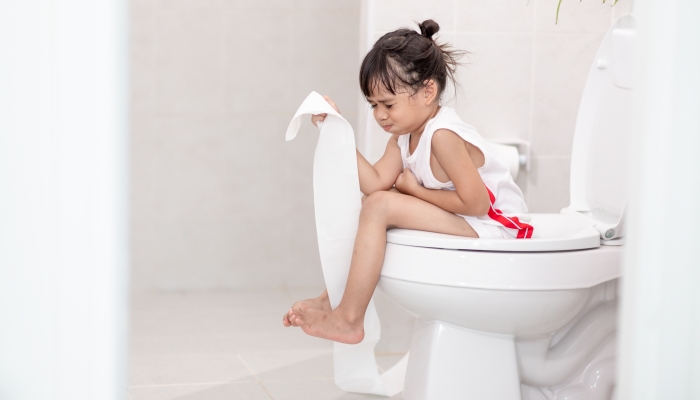
Aside from making dietary changes, there are other behavioral strategies that can help with constipation. For example, make sure your child has a bathroom routine and is getting plenty of exercise throughout the day.
Establish a Bathroom Routine
Toddlers are busy people, and they don’t always prioritize their bathroom habits when scheduling their day. Regular bathroom breaks can help to ease constipation and encourage healthy bathroom habits.
Have your child sit on the potty after meals. Eating kickstarts the digestive system, so this is often the best time to go. Try to do this after each meal so your child gets into a routine of visiting the toilet after eating.
Blowing bubbles or inflating balloons can help to relax the right muscles, so these are good activities to distract your child with during these regular bathroom trips.
A good sitting position is important, too, so ensure your child’s legs are planted firmly on the ground or on a box if using the toilet. A potty training seat can help your child get into the optimal position for a bowel movement.
Encourage Physical Activity
Physical activity can aid the digestive system to do its job, so be sure your child is getting plenty of exercise every day. They key is to move your body, so get your child moving every day.
Your toddler will likely enjoy walks to the park, running around the yard, bouncing on the trampoline, and swimming at your local pool. These are great options for getting regular exercise. The stretching and movement involved in yoga can also help ease constipation, and there are plenty of toddler yoga videos you can try.
Positive Reinforcement
The longer your child stays constipated, the more they’re going to suffer. The more painful their next bowel movement is, the more likely to withhold again. It’s a terrible cycle, and one you need to try and break fast.
While you might be feeling very anxious and stressed, it’s important not to let this show. Don’t let your child pick up on your worries or hear you discussing the issues as if they’re problematic.
Rewards charts and bribes might help you in the short term, and the short term might be all you need to tackle the withholding and resulting constipation. Even if you’re not usually a fan of rewards and bribes, they do have a place when it comes to your child’s health. If potty training rewards encourage your child to stop withholding, you can tackle the constipation once and for all.
How Constipation Can Affect Potty Training
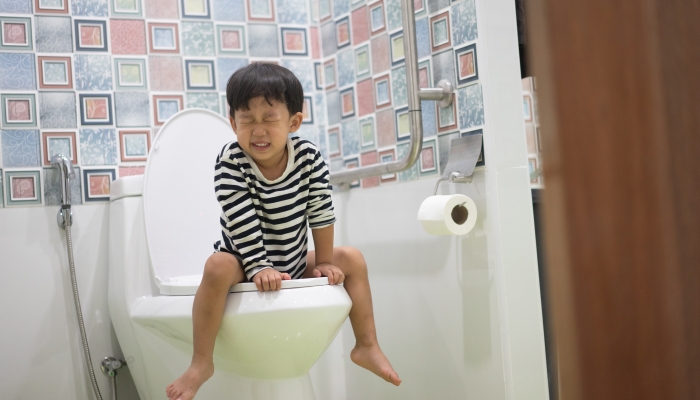
If constipation is causing your child pain, it can definitely have an affect on your potty training progress. Some kids even develop a fear of pooping after a particularly bad episode of constipation.
Fear of Using the Bathroom
Public bathrooms in particular can seem scary to kids. There are loud noises, automatic toilet flushes (that sometimes go off while you’re still sitting down), and intimidating hand dryers. It’s not surprising that this environment can be overwhelming to small children.
It may help to reduce your dependence on public restrooms during the early days of toilet training, so your child masters using the toilet at home in an environment they already feel comfortable.
Whether they’re afraid of public restrooms or worried about pain, withholding behavior will only worsen the constipation and create more pain in the future. Trying to explain all of this to a toddler is unlikely to achieve much, so your best bet is to stay positive and focus on making lifestyle changes that may ease constipation.
If your kid is still withholding, you may need a visit to the doctor’s office for some advice. Your doctor may prescribed some stool softening medication to help your child go without fear. Remember kids are quick to pick up on parental anxiety, so try to approach their constipation calmly.
When to Seek Medical Help
Though potty training constipation is a common problem and can usually be managed at home, there are times when medical advice could help. For example, if you’ve tried adding fiber to your child’s diet and encouraging exercise and they’re still struggling with constipation, you may want to contact their pediatrician for help treating constipation.
You should also see your child’s doctor if:
- The constipation lasts three weeks or longer
- Your child is in pain
- The constipation is stopping your child from engaging in every day activities
- There is blood in your child’s stool
- Your child is soiling their clothes
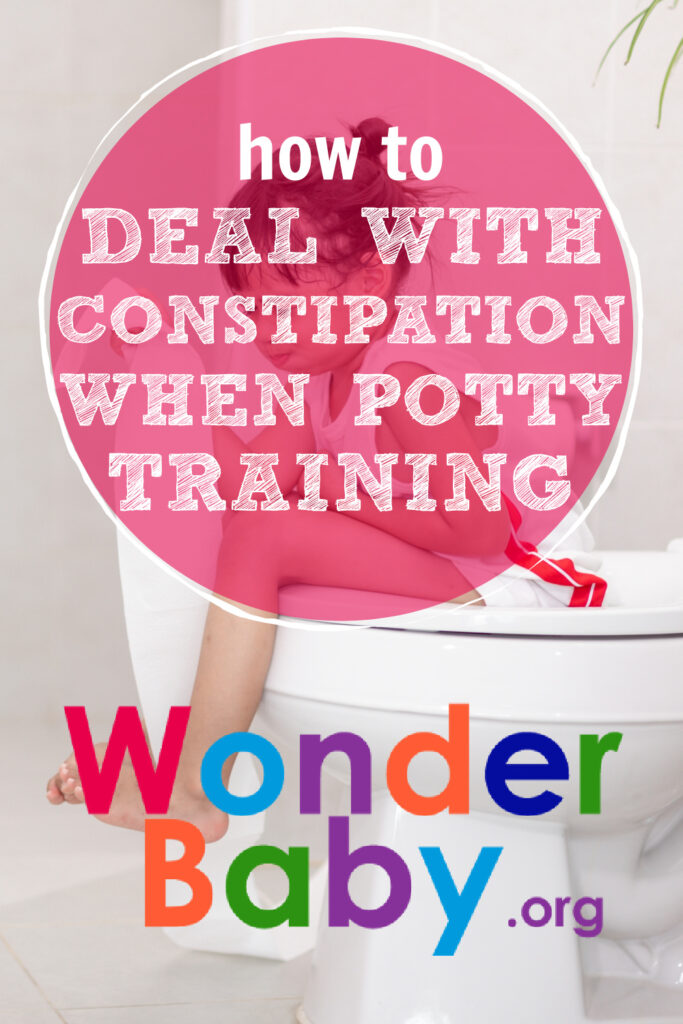
Related Posts
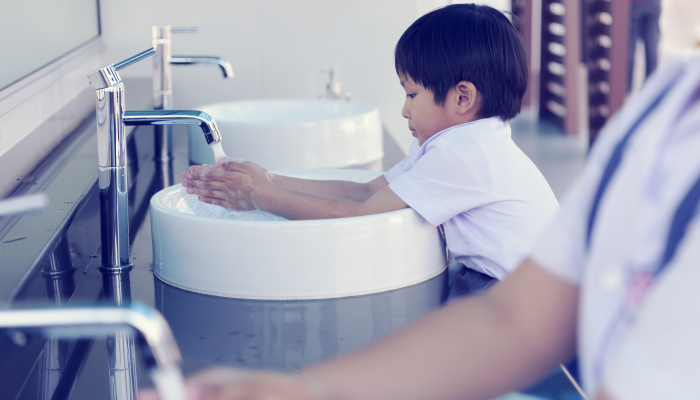
IEPs, Potty Training
7 Sample Toileting IEP Goals
Toileting IEP goals should address the specific needs and abilities of each child. Be flexible and patient as your child works on their toileting skills.
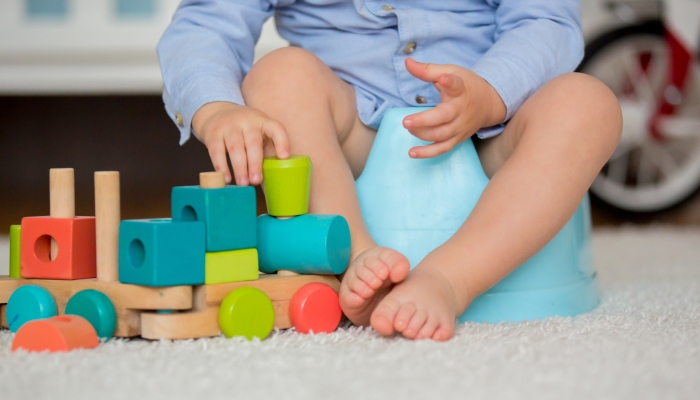
Potty Training
5 Potty Training Games To Make Potty Training Fun
Learning to use the toilet doesn’t have to feel like hard work. There are lots of potty training games you can play with your toddler to make learning fun.
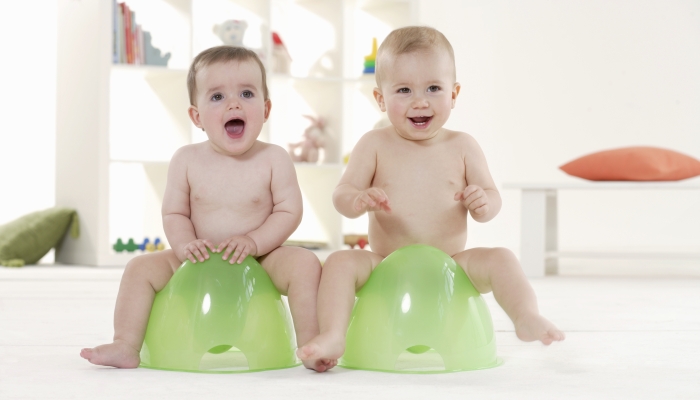
Potty Training
Potty Training Twins: Strategies and Tips That Work
You can potty train twins one at a time or together, but it’s important to follow their lead and go at a reasonable pace. Learn more tips here!